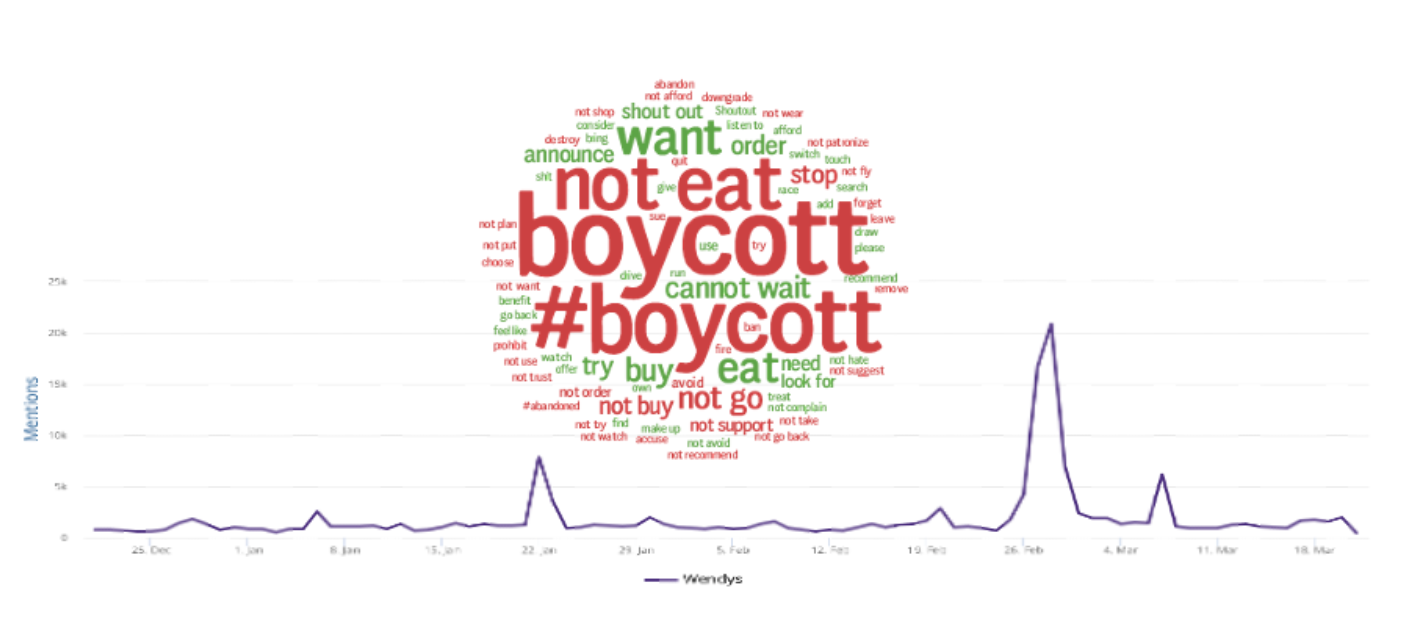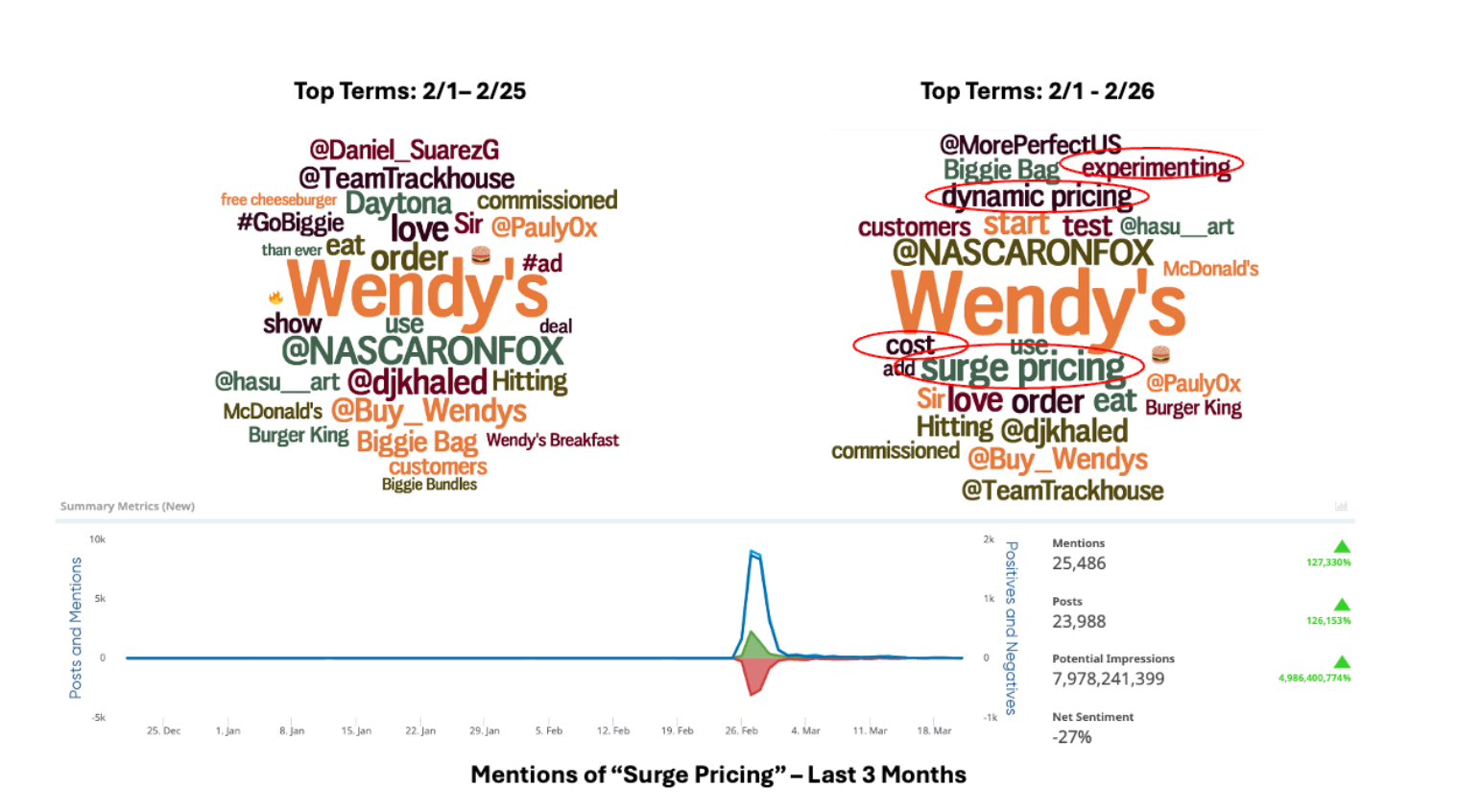Wendy's: New CEO, Dynamic Pricing, and Unhappy Customers ~via Matt Amick
I met Matt Amick in Dallas at the VIP Marketers dinner following the Brand Innovators Culture Summit at 7eleven Headquarters. Being the smart and personable fellow he is, we had a spirited conversation about marketing, community, and most importantly fatherhood.
Enjoy Matt’s insights here, this post hits on a very critical topic often mysteriously () overlooked… “your brand is not how you perceive it, but how it is perceived by consumers.” AND… you better be listening, especially when pivoting and/or making major announcements. /Ted
For those of you who aren't entrenched in the world of online conversation, here's the quick backstory.
During a seemingly innocent earnings call on February 15, newly appointed Wendy's CEO, Kirk Tanner discussed a myriad of investments the company is making to improve operational efficiency and boost customer experience. One was something called Digital Menu Boards - Directly from Tanner's call with analysts:
"We expect our digital menu boards will drive immediate benefits to order accuracy, improve crew experience and sales growth from upselling and consistent merchandising execution. Beginning as early as 2025, we will begin testing more enhanced features like dynamic pricing and day-part offerings along with AI-enabled menu changes and suggestive selling."
11 days later, online conversation exploded. Calls for boycotts of the food chain rose sharply with complaints of price gauging and corporate greed. So here are the questions I'll try to answer:
What happened, and why did it take 11 days for this story to gain traction with customers?
Could Wendy's have seen this coming and changed course prior to the backlash?
How did Wendy's respond, and are customers buying it?
Wendy's Conversation over the last 3 months - Calls for boycotts have taken over the general conversation (top) and a huge volume spike begins on February 26.
What happened on February 26?
Inflation has been a hot topic for a few years at this point, so brands should tread carefully when it comes to pricing decisions. Quick Serve Restaurants like Wendy's and McDonald's are often viewed as convenient and affordable options - particularly when costs elsewhere are skyrocketing.
As you can see in the chart above, conversation was stable leading up to the 26th. In my eyes, that's an indication that the term "dynamic pricing" was not resonating one way or another with general customers.
But on February 26th, something changed - Uber and Lyft, along with the term "surge pricing" entered the conversation. One of the first mentions of the term as it relates to Wendy's is from X Account, "More Perfect Union" (@MorePerfectUS 15.3 Million Views - 253K followers - February 26, 2024)
@MorePerfectUS : Wendy's will start experimenting with surge pricing in 2025, along the lines of Uber and Lyft. Wendy's will test "dynamic pricing" on burgers, frosties, and other menu items, which will cost more during times of increased demand.
It seems that this positioning of dynamic pricing in the context of familiar pricing practices from Uber and Lyft sent customers into the frenzied state. Other media outlets like Forbes, Fox News, and CBS ran stories with surge pricing in the spotlight.
Dynamic Pricing? Meh.
Surge pricing? Think again, Wendy's!
February 1 to February 25: Almost zero conversation about pricing/costs (left). That changed drastically on February 26 (right). Mentions of "Surge Pricing" are virtually non-existent until February 26 (bottom)
Were there warning signs?
Through an analysis of the Wendy's conversation leading up to February 26th, I found a number of lesser-known online forums where people were discussing the earnings call, and what "Dynamic Pricing" could really mean for customers. One in particular was a gaming forum (graffes.com) which included one of the very first, if not first, mention of surge pricing from the customer perspective.
"Ultimately, that could blow up in their face"
"Quality is no longer on the menu"
"You become a stronger player by having more desirable menu options at more competitive prices than the other guys"
Through leveraging alerts triggered by sentiment drops, the use of specific keywords, volume fluctuations and more, brands can act quickly and with confidence. In cases like this, they have a fighting chance to avoid millions of dollars in reputational damage.
On February 18, there was a small yet noticeable increase in boycott conversation related to the dynamic pricing announcement - almost a full 8 days before things took off.
Wendy's Response - Are Customers Buying?
The company was forced to issue a clarifying statement which in part reads:
“We said these menu boards would give us more flexibility to change the display of featured items,” the company said. “This was misconstrued in some media reports as an intent to raise prices when demand is highest at our restaurants. We have no plans to do that and would not raise prices when our customers are visiting us most.”
As for whether or not customers are buying the clarification? Some argue that the damage has been done. For me, it's a bit too soon to tell.
I expect we'll see our answer in the next earnings call (May 8, 2024)
The Takeaways
Ensuring you have coverage of the conversation around your brands, services, and products goes far beyond traditional social channels.
Your brand is not defined by what you tell your customers. It is defined by how your customers talk about you, and why.
Brands often overlook the necessity of premium news coverage. How a brand is covered by the press plays a critical role in how customers perceive it.





